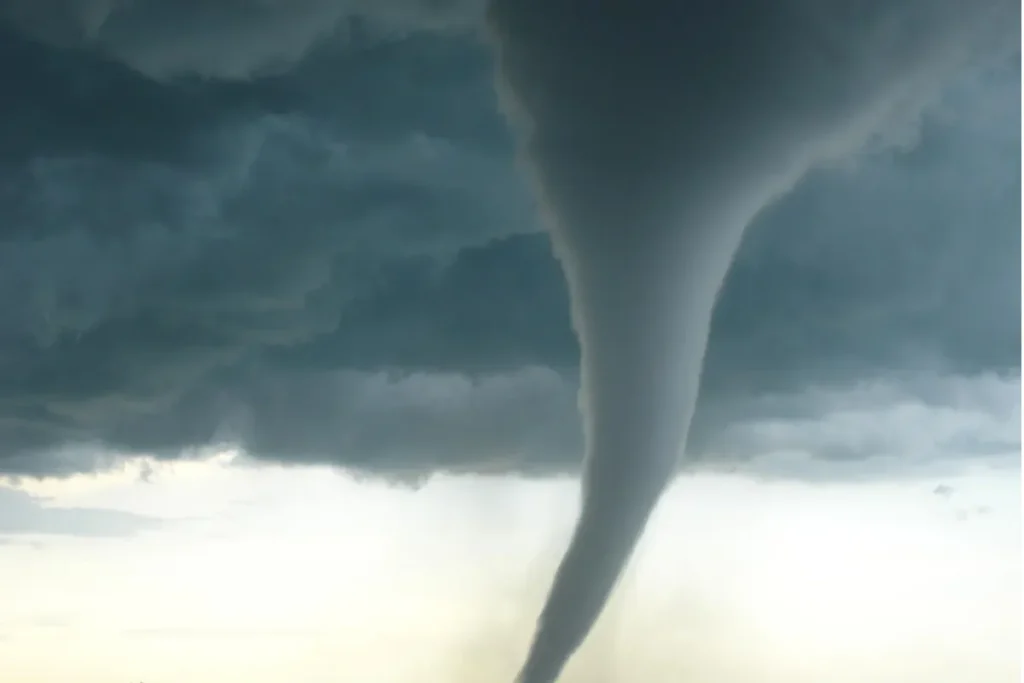In the heartland of America, where the vast expanse of the Great Plains meets the turbulent skies, the specter of tornadoes looms large as a potent reminder of nature’s awesome power.
On a day like the one in question, with tornadoes confirmed on the ground west of Wichita Falls, the urgency to respond, the need for accurate information dissemination, and the imperative to safeguard lives and property become paramount.
In this comprehensive article, we delve into the unfolding events surrounding the confirmed tornadoes west of Wichita Falls.
From the science behind tornado formation to the community’s response efforts, we explore the multifaceted aspects of this natural disaster and its impact on the affected areas.
Understanding Tornado Formation: Nature’s Fury Unleashed

Tornadoes, those twisting, swirling columns of air, are born from the volatile marriage of warm, moist air rising and colliding with cooler, denser air masses.
Within severe thunderstorms, known as supercells, the stage is set for the birth of these atmospheric juggernauts.
As the warm, moist air ascends within the updraft of a supercell, it encounters wind shear—a change in wind speed and direction with altitude.
This wind shear causes the rotating updraft to tilt, creating a mesocyclone—a rotating vortex of air several miles wide within the storm.
Under the right conditions, this mesocyclone can produce a tornado, as the rotating air within the storm tightens into a concentrated funnel that descends to the ground.
Once on the ground, the tornado’s destructive power is unleashed, with wind speeds capable of reaching hundreds of miles per hour and wreaking havoc on anything in its path.
Confirmation and Warning: Protecting Lives Through Timely Alerts
The confirmation of tornadoes on the ground west of Wichita Falls triggers a rapid response from local authorities, meteorologists, and emergency management teams.
The National Weather Service (NWS), equipped with advanced radar systems and trained meteorologists, plays a pivotal role in detecting and tracking tornadoes, issuing timely warnings, and alerting residents in the affected areas.
Through the use of Doppler radar, storm spotters, and ground truth reports, the NWS can confirm the presence of tornadoes on the ground and provide accurate information to the public.
Tornado warnings are disseminated through various channels, including outdoor sirens, television and radio broadcasts, mobile phone alerts, and social media platforms, urging residents to seek shelter immediately.
The urgency of these warnings cannot be overstated, as tornadoes can form and intensify rapidly, leaving little time for residents to react.
By heeding the warnings and taking appropriate shelter measures, individuals and families can significantly reduce their risk of injury or death during a tornado event.
Community Response Efforts: Strength in Unity and Preparedness
In the face of a tornado threat, communities west of Wichita Falls rally together to respond, support, and protect one another.
Local emergency management agencies, fire departments, law enforcement, and medical services mobilize to coordinate response efforts, assess damage, and provide assistance to affected residents.
Utility crews work tirelessly to restore power, repair downed lines, and address infrastructure damage caused by the tornadoes.
Public works departments clear debris from roadways, assess structural integrity, and ensure the safety of travel routes for residents and emergency responders.
Community organizations, volunteer groups, and neighboring jurisdictions offer support, resources, and solidarity to aid in the recovery efforts.
From sheltering displaced residents to providing food, water, and medical assistance, the outpouring of support demonstrates the resilience and compassion of the community in the face of adversity.
Preparedness and Resilience: Building a Stronger Tomorrow
As the immediate threat from the tornadoes west of Wichita Falls subsides, the focus shifts to preparedness, recovery, and resilience.
Lessons learned from this event underscore the importance of proactive preparedness measures, effective communication, and community collaboration in mitigating the impact of tornadoes and other natural disasters.
Residents are encouraged to develop emergency plans, assemble disaster kits, and stay informed about weather conditions and alerts.
By taking proactive steps to prepare for severe weather events, individuals and families can better protect themselves and their property, minimize damage, and expedite recovery efforts in the aftermath of a disaster.
Investments in resilient infrastructure, early warning systems, and community education initiatives are essential for building a more resilient society capable of withstanding the challenges posed by tornadoes and other extreme weather events.
By working together, sharing knowledge, and fostering a culture of preparedness, we can build a safer, stronger, and more resilient future for all.
Conclusion
The confirmation of tornadoes on the ground west of Wichita Falls serves as a stark reminder of the unpredictable and destructive power of nature.
Through timely alerts, coordinated response efforts, and community resilience, residents and emergency responders unite to protect lives, mitigate damage, and support one another in the face of adversity.
As we reflect on the events of this day and look to the future, let us remember the importance of preparedness, vigilance, and unity in the face of natural disasters.
By working together and embracing a culture of resilience, we can build safer, stronger communities capable of weathering any storm.